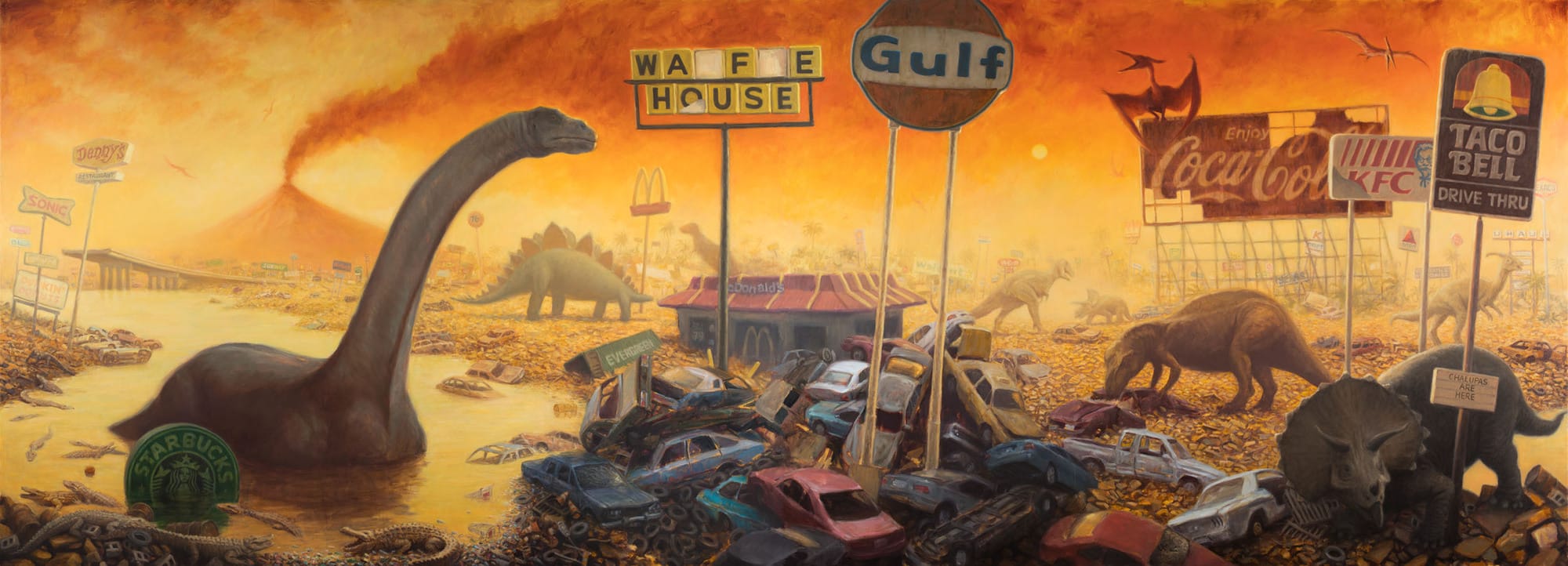This post was originally published on Colossal
After ending another year of record-breaking climate statistics, we stand at the precipice of 2025, which has already revealed its own devastating challenges. As the window for meaningful change continues to narrow during the next several years, we’re left to wonder what the world might look like if we stay on this path. Through the lens of hyper-consumerism, San Francisco-based artist Michael Kerbow (previously) envisions the future in his wry and imaginative landscape paintings.
Swarming decayed gas station roofs, perching atop abandoned vehicles in forests, and sauntering past crumbling highways and fast food joints, the dinosaurs in Kerbow’s paintings govern a world overrun by the effects of late-stage capitalism. Hints of climate devastation reveal themselves through small details in the background, such as volcano eruptions, dense, hazy skies, and pools of floodwater.

Kerbow scatters familiar signage and advertisements from recognizable chains within his scenes to introduce humor and make his work more approachable. However, the artist emphasizes the gravity of the issue at hand:
We like to believe everything we currently have will always be there for us, but I suspect it could just as easily fall apart and slip away. I try to stay optimistic about the future, but the truth is I am troubled by where I see things appear to be headed, specifically with the health of our ecosystem. Each passing year seems to bring more alarming statistics, and this comfortable place we call home seems to grow more precarious. It is sobering to consider my artwork as foreshadowing a future reality.
As Kerbow continues to make new paintings, you can follow along on Instagram and see his website for more.









Do stories and artists like this matter to you? Become a Colossal Member today and support independent arts publishing for as little as $7 per month. The article Dinosaurs Overrun a World Post Climate Disaster in Michael Kerbow’s Paintings appeared first on Colossal.





0 Comments